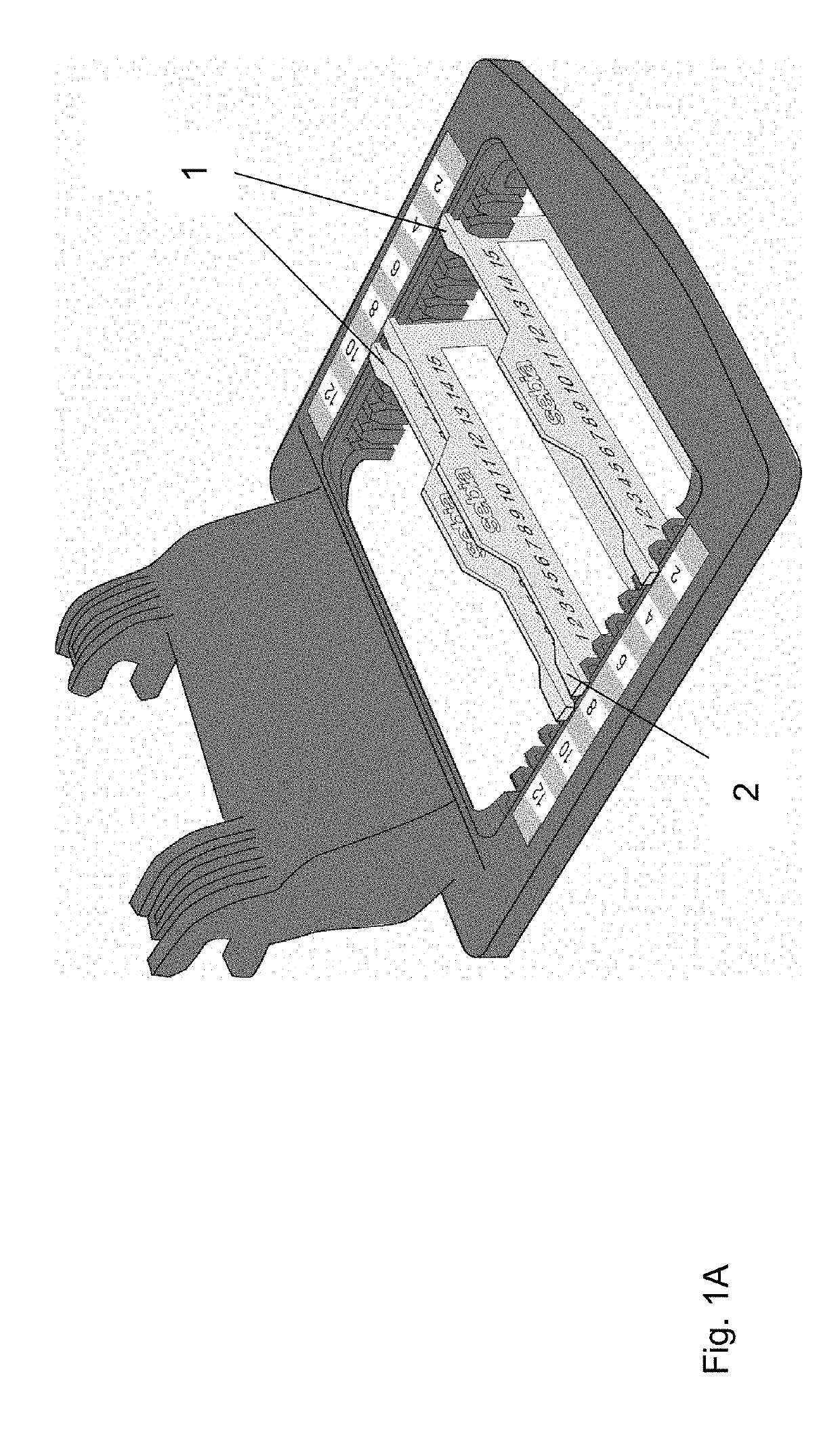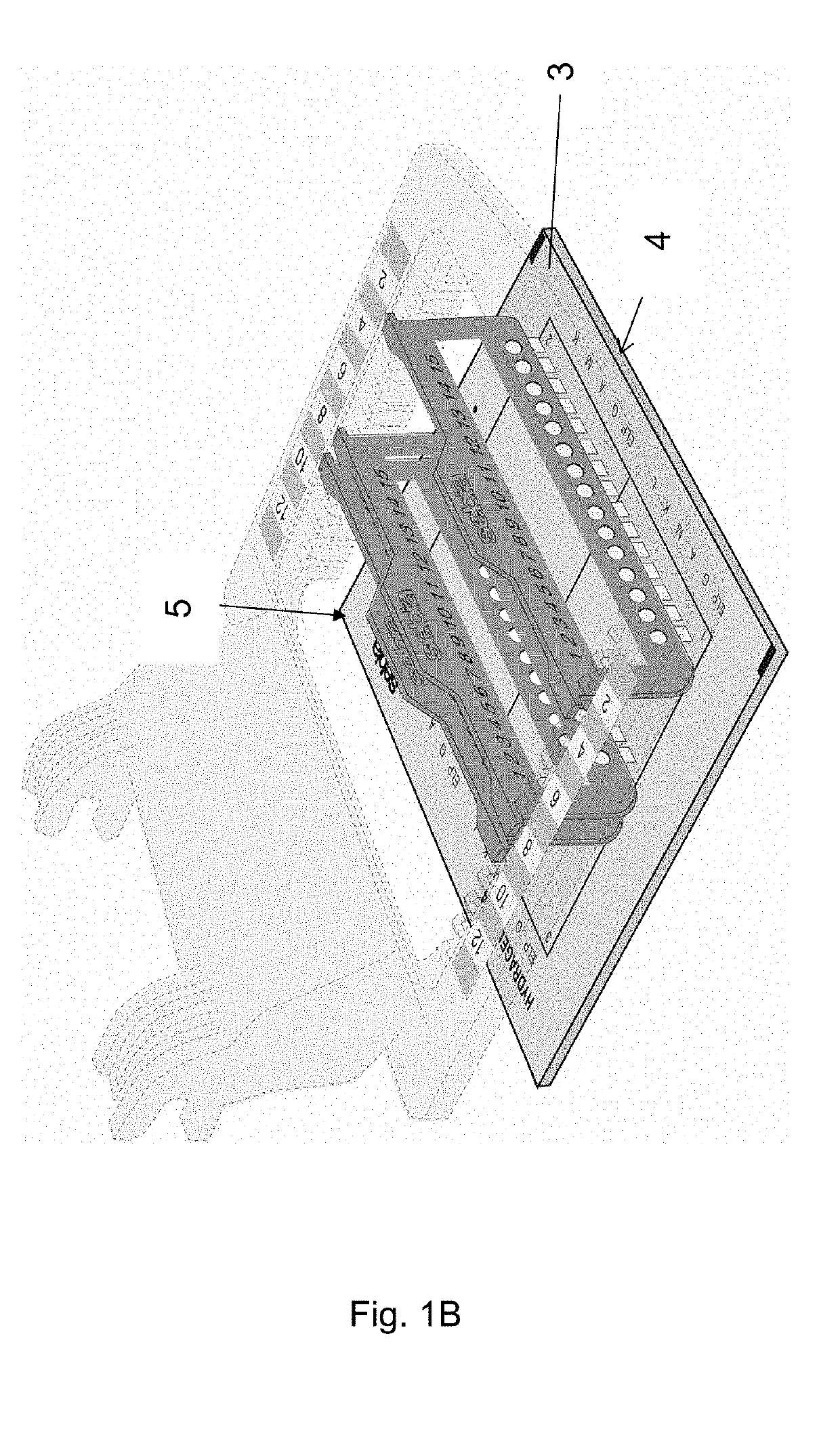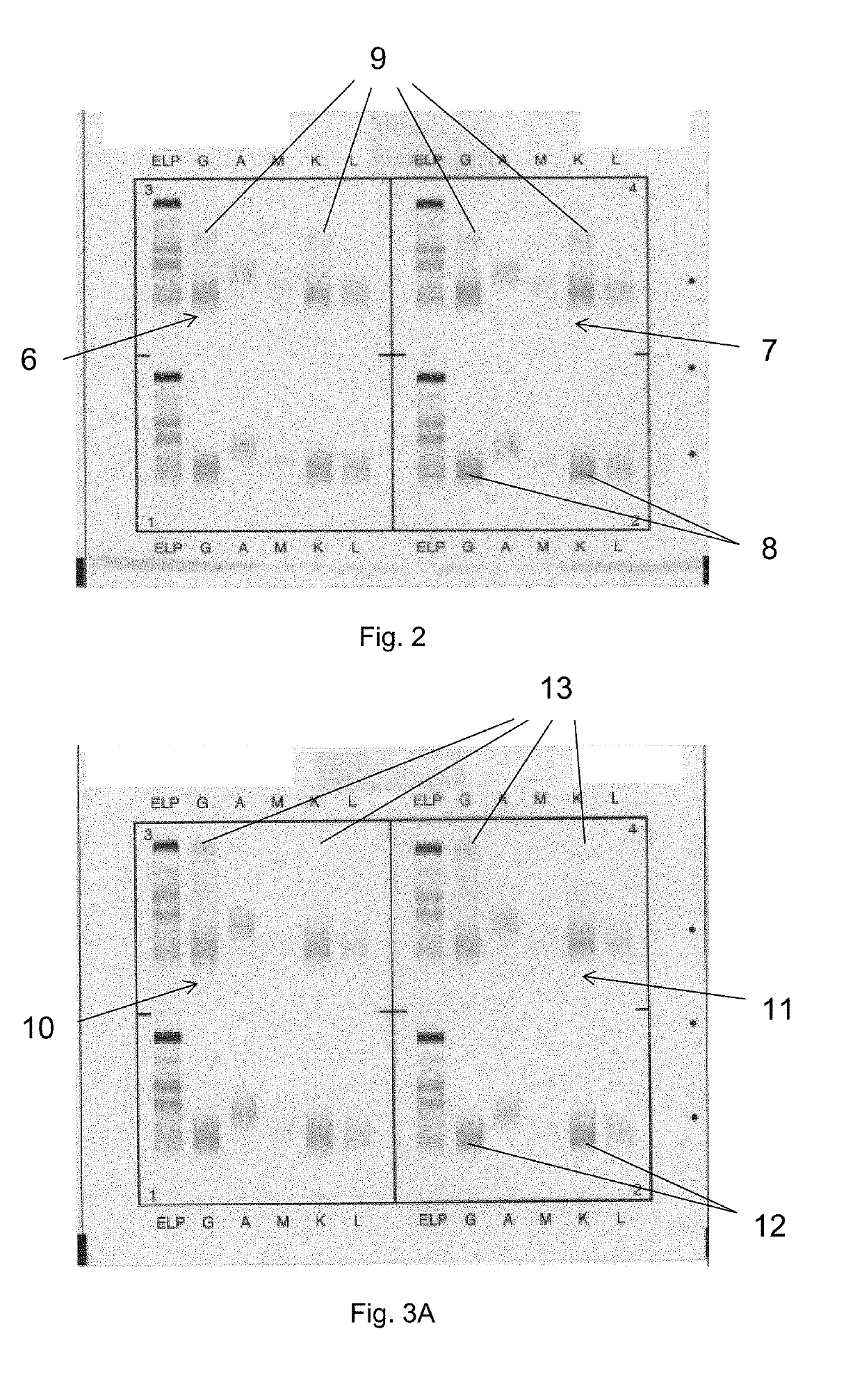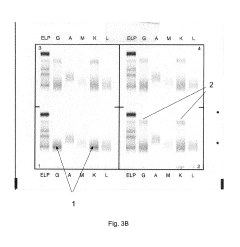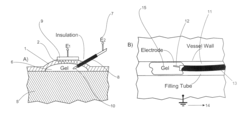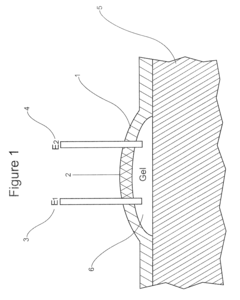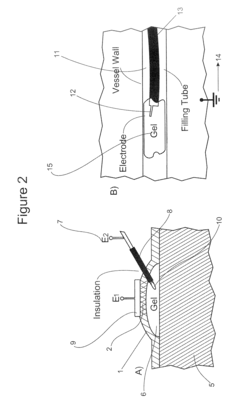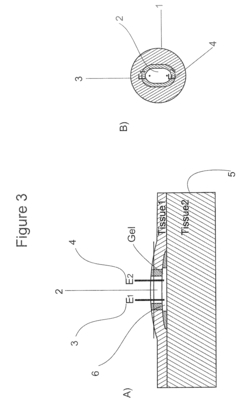Gel Electrophoresis in Immunology: Transformative Applications
JUL 1, 20258 MIN READ
Generate Your Research Report Instantly with AI Agent
Patsnap Eureka helps you evaluate technical feasibility & market potential.
Gel Electrophoresis Immunology Evolution
Gel electrophoresis has undergone significant evolution in its application to immunology since its inception. Initially developed in the 1930s for separating proteins, this technique has become an indispensable tool in immunological research and diagnostics. The early stages of gel electrophoresis in immunology focused primarily on the separation and identification of antibodies and antigens.
As the field progressed, researchers began to refine the technique, leading to the development of more sophisticated methods such as immunoelectrophoresis in the 1950s. This technique combined electrophoresis with immunodiffusion, allowing for the simultaneous separation and identification of multiple antigens or antibodies in complex mixtures.
The 1960s and 1970s saw the introduction of sodium dodecyl sulfate-polyacrylamide gel electrophoresis (SDS-PAGE), which revolutionized protein analysis in immunology. This method enabled the separation of proteins based on their molecular weight, providing crucial insights into the structure and composition of antibodies and other immune system components.
The advent of two-dimensional gel electrophoresis in the 1970s further expanded the capabilities of this technique in immunological research. By separating proteins based on both their isoelectric point and molecular weight, researchers could achieve higher resolution and identify a greater number of proteins in complex biological samples.
In the 1980s and 1990s, the integration of gel electrophoresis with Western blotting techniques marked another significant milestone. This combination allowed for the specific detection and quantification of target proteins, greatly enhancing the sensitivity and specificity of immunological assays.
The turn of the millennium brought about the era of proteomics, where gel electrophoresis played a crucial role in large-scale protein analysis. Techniques such as difference gel electrophoresis (DIGE) emerged, enabling the comparison of protein expression levels between different samples on a single gel.
Recent advancements have focused on improving the resolution, sensitivity, and throughput of gel electrophoresis techniques. The development of capillary electrophoresis and microfluidic devices has allowed for the miniaturization and automation of immunological assays, leading to faster and more efficient analyses.
Today, gel electrophoresis continues to evolve, with ongoing research aimed at enhancing its capabilities in immunological applications. The integration of gel electrophoresis with mass spectrometry and other advanced analytical techniques is opening new avenues for the study of complex immune responses and the discovery of novel biomarkers.
As the field progressed, researchers began to refine the technique, leading to the development of more sophisticated methods such as immunoelectrophoresis in the 1950s. This technique combined electrophoresis with immunodiffusion, allowing for the simultaneous separation and identification of multiple antigens or antibodies in complex mixtures.
The 1960s and 1970s saw the introduction of sodium dodecyl sulfate-polyacrylamide gel electrophoresis (SDS-PAGE), which revolutionized protein analysis in immunology. This method enabled the separation of proteins based on their molecular weight, providing crucial insights into the structure and composition of antibodies and other immune system components.
The advent of two-dimensional gel electrophoresis in the 1970s further expanded the capabilities of this technique in immunological research. By separating proteins based on both their isoelectric point and molecular weight, researchers could achieve higher resolution and identify a greater number of proteins in complex biological samples.
In the 1980s and 1990s, the integration of gel electrophoresis with Western blotting techniques marked another significant milestone. This combination allowed for the specific detection and quantification of target proteins, greatly enhancing the sensitivity and specificity of immunological assays.
The turn of the millennium brought about the era of proteomics, where gel electrophoresis played a crucial role in large-scale protein analysis. Techniques such as difference gel electrophoresis (DIGE) emerged, enabling the comparison of protein expression levels between different samples on a single gel.
Recent advancements have focused on improving the resolution, sensitivity, and throughput of gel electrophoresis techniques. The development of capillary electrophoresis and microfluidic devices has allowed for the miniaturization and automation of immunological assays, leading to faster and more efficient analyses.
Today, gel electrophoresis continues to evolve, with ongoing research aimed at enhancing its capabilities in immunological applications. The integration of gel electrophoresis with mass spectrometry and other advanced analytical techniques is opening new avenues for the study of complex immune responses and the discovery of novel biomarkers.
Market Demand Analysis
The market demand for gel electrophoresis in immunology has been experiencing significant growth, driven by the increasing prevalence of autoimmune diseases, rising investments in proteomics research, and the expanding applications of immunological techniques in various fields. The global immunology market, which heavily relies on gel electrophoresis techniques, is projected to reach substantial market value in the coming years, with a compound annual growth rate outpacing many other sectors in the life sciences industry.
One of the primary factors fueling this demand is the rising incidence of autoimmune disorders worldwide. As these conditions become more prevalent, there is a growing need for advanced diagnostic tools and research methodologies, where gel electrophoresis plays a crucial role. The technique's ability to separate and analyze complex protein mixtures makes it indispensable in studying autoantibodies and other immunological markers associated with these diseases.
Furthermore, the pharmaceutical and biotechnology industries are increasingly investing in immunology research for drug development. Gel electrophoresis serves as a fundamental tool in this process, enabling researchers to characterize antibodies, analyze protein interactions, and assess the purity of immunological products. This has led to a surge in demand for high-performance gel electrophoresis systems and related consumables.
The field of personalized medicine has also contributed significantly to the market growth of gel electrophoresis in immunology. As healthcare moves towards more tailored treatment approaches, there is a growing need for precise diagnostic tools that can identify individual immune profiles. Gel electrophoresis techniques, particularly when combined with other analytical methods, offer the sensitivity and specificity required for such applications.
In the academic and research sector, the demand for gel electrophoresis in immunology continues to rise. Universities and research institutions are expanding their immunology programs, driving the need for advanced laboratory equipment. Additionally, the increasing focus on understanding the immune system's role in various diseases, including cancer and infectious diseases, has further boosted the adoption of gel electrophoresis techniques.
The COVID-19 pandemic has also had a notable impact on the market demand for gel electrophoresis in immunology. The urgent need for vaccine development and serological testing has highlighted the importance of immunological research, leading to increased funding and resource allocation in this field. This has, in turn, accelerated the adoption of advanced analytical techniques, including gel electrophoresis, in both research and clinical settings.
One of the primary factors fueling this demand is the rising incidence of autoimmune disorders worldwide. As these conditions become more prevalent, there is a growing need for advanced diagnostic tools and research methodologies, where gel electrophoresis plays a crucial role. The technique's ability to separate and analyze complex protein mixtures makes it indispensable in studying autoantibodies and other immunological markers associated with these diseases.
Furthermore, the pharmaceutical and biotechnology industries are increasingly investing in immunology research for drug development. Gel electrophoresis serves as a fundamental tool in this process, enabling researchers to characterize antibodies, analyze protein interactions, and assess the purity of immunological products. This has led to a surge in demand for high-performance gel electrophoresis systems and related consumables.
The field of personalized medicine has also contributed significantly to the market growth of gel electrophoresis in immunology. As healthcare moves towards more tailored treatment approaches, there is a growing need for precise diagnostic tools that can identify individual immune profiles. Gel electrophoresis techniques, particularly when combined with other analytical methods, offer the sensitivity and specificity required for such applications.
In the academic and research sector, the demand for gel electrophoresis in immunology continues to rise. Universities and research institutions are expanding their immunology programs, driving the need for advanced laboratory equipment. Additionally, the increasing focus on understanding the immune system's role in various diseases, including cancer and infectious diseases, has further boosted the adoption of gel electrophoresis techniques.
The COVID-19 pandemic has also had a notable impact on the market demand for gel electrophoresis in immunology. The urgent need for vaccine development and serological testing has highlighted the importance of immunological research, leading to increased funding and resource allocation in this field. This has, in turn, accelerated the adoption of advanced analytical techniques, including gel electrophoresis, in both research and clinical settings.
Technical Challenges
Gel electrophoresis in immunology faces several technical challenges that hinder its widespread adoption and limit its potential applications. One of the primary obstacles is the complexity of sample preparation, which often requires extensive processing and purification steps. This can lead to potential loss or alteration of target molecules, affecting the accuracy and reliability of results.
Another significant challenge is the limited sensitivity of traditional gel electrophoresis techniques. While they can effectively separate proteins and nucleic acids based on size and charge, detecting low-abundance molecules or subtle differences in protein modifications remains difficult. This limitation is particularly problematic in immunological studies where rare biomarkers or slight changes in protein structure can be crucial indicators of disease or immune response.
The time-consuming nature of gel electrophoresis poses a substantial hurdle in clinical settings where rapid results are often necessary. The process of gel preparation, sample loading, running the electrophoresis, and subsequent staining or visualization can take several hours to days, which is not ideal for time-sensitive immunological applications.
Reproducibility and standardization present ongoing challenges in gel electrophoresis. Variations in gel composition, running conditions, and sample preparation can lead to inconsistent results across different laboratories or even within the same lab. This lack of standardization hampers the comparison of results and the establishment of reliable diagnostic or research protocols in immunology.
The resolution of gel electrophoresis, while generally good, can be insufficient for separating complex mixtures of proteins or nucleic acids with similar molecular weights. This limitation is particularly evident when dealing with post-translational modifications or subtle genetic variations, which are often critical in immunological studies.
Quantification and data analysis remain challenging aspects of gel electrophoresis in immunology. While densitometry techniques have improved, accurate quantification of protein or nucleic acid bands can be difficult, especially when dealing with overlapping or faint bands. This challenge is compounded by the semi-quantitative nature of many gel electrophoresis methods, which may not provide the precise measurements required for advanced immunological research.
Lastly, the integration of gel electrophoresis with other analytical techniques presents both opportunities and challenges. While coupling gel electrophoresis with mass spectrometry or Western blotting has enhanced its capabilities, seamless integration and automation of these processes remain areas for improvement. Developing more efficient and user-friendly interfaces between gel electrophoresis and complementary analytical methods could significantly enhance its utility in immunological applications.
Another significant challenge is the limited sensitivity of traditional gel electrophoresis techniques. While they can effectively separate proteins and nucleic acids based on size and charge, detecting low-abundance molecules or subtle differences in protein modifications remains difficult. This limitation is particularly problematic in immunological studies where rare biomarkers or slight changes in protein structure can be crucial indicators of disease or immune response.
The time-consuming nature of gel electrophoresis poses a substantial hurdle in clinical settings where rapid results are often necessary. The process of gel preparation, sample loading, running the electrophoresis, and subsequent staining or visualization can take several hours to days, which is not ideal for time-sensitive immunological applications.
Reproducibility and standardization present ongoing challenges in gel electrophoresis. Variations in gel composition, running conditions, and sample preparation can lead to inconsistent results across different laboratories or even within the same lab. This lack of standardization hampers the comparison of results and the establishment of reliable diagnostic or research protocols in immunology.
The resolution of gel electrophoresis, while generally good, can be insufficient for separating complex mixtures of proteins or nucleic acids with similar molecular weights. This limitation is particularly evident when dealing with post-translational modifications or subtle genetic variations, which are often critical in immunological studies.
Quantification and data analysis remain challenging aspects of gel electrophoresis in immunology. While densitometry techniques have improved, accurate quantification of protein or nucleic acid bands can be difficult, especially when dealing with overlapping or faint bands. This challenge is compounded by the semi-quantitative nature of many gel electrophoresis methods, which may not provide the precise measurements required for advanced immunological research.
Lastly, the integration of gel electrophoresis with other analytical techniques presents both opportunities and challenges. While coupling gel electrophoresis with mass spectrometry or Western blotting has enhanced its capabilities, seamless integration and automation of these processes remain areas for improvement. Developing more efficient and user-friendly interfaces between gel electrophoresis and complementary analytical methods could significantly enhance its utility in immunological applications.
Current Methodologies
01 Gel composition and preparation
Various gel compositions and preparation methods are used in gel electrophoresis. These include specific formulations of agarose, polyacrylamide, or other polymers to create gels with desired properties for different applications. The composition and preparation of the gel matrix are crucial for achieving optimal separation of molecules based on size, charge, or other characteristics.- Gel composition and preparation: Various gel compositions and preparation methods are used in gel electrophoresis. These include specific formulations of polyacrylamide gels, agarose gels, and other polymer-based gels. The composition and preparation of these gels are crucial for achieving optimal separation of molecules based on size and charge.
- Electrophoresis apparatus design: Innovations in electrophoresis apparatus design focus on improving efficiency, resolution, and ease of use. These designs may include novel electrode configurations, buffer systems, and sample loading mechanisms. Some apparatus designs also incorporate features for temperature control and real-time monitoring of the separation process.
- Detection and analysis methods: Advanced detection and analysis methods are developed to enhance the visualization and quantification of separated molecules. These may include fluorescence-based detection, colorimetric methods, and integration with mass spectrometry. Some techniques focus on improving sensitivity and reducing background noise for more accurate results.
- Microfluidic and miniaturized systems: Miniaturized gel electrophoresis systems, including microfluidic devices, are developed for rapid and high-throughput analysis. These systems often require less sample volume and offer faster separation times compared to traditional methods. Some designs integrate multiple analytical steps into a single chip or device.
- Specialized applications and modifications: Specialized gel electrophoresis techniques are developed for specific applications, such as DNA sequencing, protein analysis, and clinical diagnostics. These may involve modifications to the gel composition, running conditions, or sample preparation methods to optimize separation for particular types of molecules or to address specific analytical challenges.
02 Electrophoresis apparatus design
Innovations in electrophoresis apparatus design focus on improving efficiency, resolution, and ease of use. These designs may include novel electrode configurations, buffer circulation systems, or temperature control mechanisms. Some apparatuses are designed for specific applications, such as DNA sequencing or protein analysis, while others are more versatile for general use.Expand Specific Solutions03 Sample loading and detection methods
Advancements in sample loading techniques and detection methods enhance the accuracy and sensitivity of gel electrophoresis. These may include automated sample loading systems, fluorescent labeling techniques, or integrated imaging systems for real-time monitoring of sample migration. Some innovations focus on improving the detection of low-abundance molecules or increasing the throughput of analysis.Expand Specific Solutions04 Microfluidic and miniaturized systems
Miniaturization of gel electrophoresis systems has led to the development of microfluidic devices and lab-on-a-chip technologies. These systems offer advantages such as reduced sample and reagent consumption, faster analysis times, and potential for integration with other analytical techniques. Some designs incorporate novel materials or fabrication methods to achieve miniaturization while maintaining separation efficiency.Expand Specific Solutions05 Specialized electrophoresis techniques
Various specialized electrophoresis techniques have been developed for specific applications or to overcome limitations of traditional methods. These may include pulsed-field gel electrophoresis, two-dimensional gel electrophoresis, or capillary gel electrophoresis. Some techniques focus on improving the separation of specific types of molecules, such as large DNA fragments or complex protein mixtures.Expand Specific Solutions
Key Industry Players
The gel electrophoresis market in immunology is experiencing significant growth, driven by advancements in technology and increasing applications in disease diagnosis and research. The market is in a mature stage but continues to evolve with new innovations. Key players like The Regents of the University of California, Memorial Sloan Kettering Cancer Center, and EMD Millipore Corp. are leading research and development efforts. The technology's maturity varies across applications, with established uses in protein analysis and emerging applications in personalized medicine. Companies such as Sebia SA and Helena Laboratories Corp. are focusing on developing more sophisticated and automated systems, enhancing the technique's precision and efficiency in clinical settings.
The Regents of the University of California
Technical Solution: The University of California has developed advanced gel electrophoresis techniques for immunological applications. Their approach involves using high-resolution 2D gel electrophoresis combined with mass spectrometry for comprehensive protein analysis in immune cells[1]. This method allows for the separation and identification of thousands of proteins simultaneously, providing a detailed map of the immune cell proteome. They have also pioneered the use of capillary gel electrophoresis for rapid and sensitive detection of antibodies and other immune markers[2]. This technique offers improved resolution and faster analysis times compared to traditional slab gel methods. Additionally, the university has developed novel cross-linking techniques to enhance the stability of protein complexes during electrophoresis, allowing for better preservation of native protein interactions in immunological studies[3].
Strengths: High-resolution protein separation, comprehensive proteome analysis, and improved detection of immune markers. Weaknesses: Complex methodology may require specialized training and equipment, potentially limiting widespread adoption.
EMD Millipore Corp.
Technical Solution: EMD Millipore Corp. has developed cutting-edge gel electrophoresis technologies for immunological research and diagnostics. Their Snap i.d.® 2.0 Protein Detection System integrates gel electrophoresis with a unique vacuum-driven technology, allowing for rapid Western blotting and immunodetection of proteins[10]. This system significantly reduces processing time from hours to minutes, enhancing research efficiency. EMD Millipore has also introduced the Direct Detect® Spectrometer, which combines infrared spectroscopy with electrophoresis for label-free quantitation of proteins in complex biological samples[11]. Their Immobilon®-P PVDF membrane technology offers enhanced protein binding and low background for improved Western blot sensitivity, crucial for detecting low-abundance immune markers. Additionally, EMD Millipore has developed specialized precast gels and buffers optimized for the separation of antibodies and other immunoglobulins, providing researchers with reliable tools for immunological studies[12].
Strengths: Rapid protein detection systems, innovative label-free quantitation technology, and high-sensitivity membranes for immunoblotting. Weaknesses: Some systems may require specific proprietary consumables, potentially increasing ongoing costs for laboratories.
Innovative Techniques
Improved immunofixation electrophoresis method with target component on-gel immunodisplacement
PatentActiveUS20190242891A1
Innovation
- A method involving the use of modified antibodies with additional negative electric charges, which are deposited on the electrophoretic gel to displace interfering immunoglobulins or fragments outside the gamma zone during electrophoresis, allowing for clearer visualization and interpretation of monoclonal components by forming soluble immunocomplexes that can be detected with capture antibodies.
Gels with predetermined conductivity used in electroporation of tissue
PatentActiveUS7674249B2
Innovation
- The use of gels with adjustable conductivity, either lower or matched to surrounding tissue, to direct current flow to specific areas during electroporation, combined with finite element computer simulations and injectable electrodes to optimize electric field distribution and protect sensitive tissues.
Regulatory Considerations
Gel electrophoresis in immunology is subject to various regulatory considerations that ensure the safety, efficacy, and ethical use of this transformative technique. The U.S. Food and Drug Administration (FDA) plays a crucial role in overseeing the development and application of gel electrophoresis methods in clinical settings. Manufacturers of gel electrophoresis equipment and reagents must comply with FDA regulations, including Good Manufacturing Practices (GMP) and Quality System Regulations (QSR).
In the context of immunological research and diagnostics, gel electrophoresis falls under the broader category of in vitro diagnostic devices (IVDs). The FDA classifies IVDs into three risk-based categories, with gel electrophoresis typically falling into Class I or II. Class I devices are subject to general controls, while Class II devices may require special controls and premarket notification (510(k)) submissions.
The Clinical Laboratory Improvement Amendments (CLIA) of 1988 also impact the use of gel electrophoresis in immunology. Laboratories performing gel electrophoresis for diagnostic purposes must obtain CLIA certification and adhere to stringent quality control measures. This includes regular proficiency testing, personnel qualifications, and documentation of procedures and results.
Internationally, regulatory bodies such as the European Medicines Agency (EMA) and the World Health Organization (WHO) provide guidelines for the use of gel electrophoresis in immunological applications. The International Organization for Standardization (ISO) has established standards for quality management systems in medical laboratories (ISO 15189), which include requirements for gel electrophoresis procedures.
Ethical considerations in the use of gel electrophoresis for immunological research and diagnostics are governed by institutional review boards (IRBs) and ethics committees. These bodies ensure that research protocols involving human subjects or samples comply with ethical guidelines, including informed consent and data privacy regulations such as the Health Insurance Portability and Accountability Act (HIPAA) in the United States.
As gel electrophoresis techniques continue to evolve and find new applications in immunology, regulatory frameworks must adapt to keep pace. Emerging areas such as multiplexed gel electrophoresis systems and integration with other analytical techniques may require updated guidelines. Regulatory bodies are increasingly focusing on the validation of gel electrophoresis methods for specific immunological applications, ensuring reproducibility and reliability across different laboratories.
In the context of immunological research and diagnostics, gel electrophoresis falls under the broader category of in vitro diagnostic devices (IVDs). The FDA classifies IVDs into three risk-based categories, with gel electrophoresis typically falling into Class I or II. Class I devices are subject to general controls, while Class II devices may require special controls and premarket notification (510(k)) submissions.
The Clinical Laboratory Improvement Amendments (CLIA) of 1988 also impact the use of gel electrophoresis in immunology. Laboratories performing gel electrophoresis for diagnostic purposes must obtain CLIA certification and adhere to stringent quality control measures. This includes regular proficiency testing, personnel qualifications, and documentation of procedures and results.
Internationally, regulatory bodies such as the European Medicines Agency (EMA) and the World Health Organization (WHO) provide guidelines for the use of gel electrophoresis in immunological applications. The International Organization for Standardization (ISO) has established standards for quality management systems in medical laboratories (ISO 15189), which include requirements for gel electrophoresis procedures.
Ethical considerations in the use of gel electrophoresis for immunological research and diagnostics are governed by institutional review boards (IRBs) and ethics committees. These bodies ensure that research protocols involving human subjects or samples comply with ethical guidelines, including informed consent and data privacy regulations such as the Health Insurance Portability and Accountability Act (HIPAA) in the United States.
As gel electrophoresis techniques continue to evolve and find new applications in immunology, regulatory frameworks must adapt to keep pace. Emerging areas such as multiplexed gel electrophoresis systems and integration with other analytical techniques may require updated guidelines. Regulatory bodies are increasingly focusing on the validation of gel electrophoresis methods for specific immunological applications, ensuring reproducibility and reliability across different laboratories.
Ethical Implications
The application of gel electrophoresis in immunology has revolutionized diagnostic and research capabilities, but it also raises important ethical considerations that must be carefully addressed. One of the primary ethical concerns is the potential for misuse or unauthorized access to sensitive genetic information obtained through this technique. As gel electrophoresis can reveal detailed molecular profiles, there is a risk that this data could be used for discriminatory purposes or to violate individual privacy rights.
Furthermore, the increasing accessibility and affordability of gel electrophoresis technology raise questions about equitable access to advanced diagnostic tools. While this democratization of technology can lead to improved healthcare outcomes, it may also exacerbate existing healthcare disparities if not implemented thoughtfully and inclusively.
The use of gel electrophoresis in prenatal genetic testing presents another ethical dilemma. While it offers valuable insights into potential genetic disorders, it also raises complex questions about reproductive choices and the societal implications of selective pregnancy termination based on genetic information.
In research settings, the ethical use of human samples for gel electrophoresis studies requires careful consideration of informed consent processes and data protection measures. Researchers must ensure that participants fully understand the potential implications of their genetic information being analyzed and potentially shared within the scientific community.
The rapid advancement of gel electrophoresis techniques also necessitates ongoing ethical oversight to ensure that new applications align with established bioethical principles. This includes considerations of beneficence, non-maleficence, autonomy, and justice in both clinical and research contexts.
As gel electrophoresis continues to play a transformative role in immunology, it is crucial to establish robust ethical frameworks and guidelines. These should address issues such as data privacy, informed consent, equitable access, and the responsible use of genetic information. Additionally, ongoing dialogue between scientists, ethicists, policymakers, and the public is essential to navigate the complex ethical landscape surrounding this powerful technology.
Furthermore, the increasing accessibility and affordability of gel electrophoresis technology raise questions about equitable access to advanced diagnostic tools. While this democratization of technology can lead to improved healthcare outcomes, it may also exacerbate existing healthcare disparities if not implemented thoughtfully and inclusively.
The use of gel electrophoresis in prenatal genetic testing presents another ethical dilemma. While it offers valuable insights into potential genetic disorders, it also raises complex questions about reproductive choices and the societal implications of selective pregnancy termination based on genetic information.
In research settings, the ethical use of human samples for gel electrophoresis studies requires careful consideration of informed consent processes and data protection measures. Researchers must ensure that participants fully understand the potential implications of their genetic information being analyzed and potentially shared within the scientific community.
The rapid advancement of gel electrophoresis techniques also necessitates ongoing ethical oversight to ensure that new applications align with established bioethical principles. This includes considerations of beneficence, non-maleficence, autonomy, and justice in both clinical and research contexts.
As gel electrophoresis continues to play a transformative role in immunology, it is crucial to establish robust ethical frameworks and guidelines. These should address issues such as data privacy, informed consent, equitable access, and the responsible use of genetic information. Additionally, ongoing dialogue between scientists, ethicists, policymakers, and the public is essential to navigate the complex ethical landscape surrounding this powerful technology.
Unlock deeper insights with Patsnap Eureka Quick Research — get a full tech report to explore trends and direct your research. Try now!
Generate Your Research Report Instantly with AI Agent
Supercharge your innovation with Patsnap Eureka AI Agent Platform!
